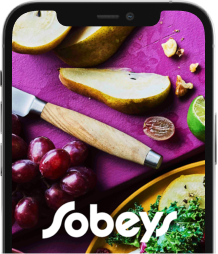Do you ever feel overwhelmed when trying to make healthy choices at the grocery store? With so many products on the shelves and more being added all the time, it is easy to be confused. The good news is that reading nutrition labels can help you make the best food choices for you and your family as you navigate the aisles. Food is key to managing diabetes and reducing the risk of chronic disease. Following a healthy eating pattern can help you manage blood sugar, meet your nutritional needs, and keep you feeling your best. To develop your label-reading skills and understand what to look for, read on!
Learning how to read and understand nutrition labels can help you make healthier food choices. Follow these three simple steps:
- Find the amount of food:
On the top of the Nutrition Facts table (NFT), the amount of food is listed as ‘serving size’. The information in the NFT is based on this amount of food. By checking the serving size, you can understand how much of a nutrient you are eating and easily compare similar products.PRO TIP: The serving size on the Nutrition Facts table does not tell you how much you should eat. It just means that if you eat that amount of food, then you get the amount of nutrients described in the table. You need to compare the serving size to the amount you actually eat; if you eat an amount of food that is twice the serving size, then you would get twice the amount of calories and nutrients.
- Use the % Daily Value:
The % Daily Value (DV) can be used as a guide to show you if a serving has a little or a lot of a nutrient: 5% DV or less is a little, and 15% DV or more is a lot. By checking %DV, you can compare similar products and find choices that align with your nutrition goals.PRO TIP: Choose foods with a lower %DV for sugar, sodium, and saturated fat. Nutrients that you may want more of include iron, fibre, calcium, and potassium. Look for foods that have a higher %DV for these nutrients.
- Read the list of ingredients:
Ingredients are listed in descending order by weight. That means the food contains more of the ingredients at the beginning of the list and less of the ingredients at the end of the list. The list of ingredients also provides important information for people with food allergies and intolerances.PRO TIP: Sugar-based ingredients are now grouped in brackets after the name ‘sugars’ to help you quickly find the sources of sugars and understand how much sugars are added to the food.
Here are some smart shopping tips to help you make healthy choices on your next grocery trip.
- Enjoy a variety of fresh, frozen, and canned vegetables and fruit. They are all good choices.
- To stretch your food dollar, buy fresh vegetables and fruit when they are on sale or in season.
- Choose whole grains most often. Look for the words “whole grain whole wheat”, whole rye, whole oats, whole corn, whole barley, etc. at the beginning of the list of ingredients.
- Look for bread, cereal, pasta and other grain products that contain at 2 grams of fibre or more per serving.
- Buy milk and yogurt with 2% Milk Fat (MF) or less and cheese with 20% MF or less.
- Choose fish, seafood, lean meat and skinless poultry.
- Select plant-based protein more often. Include beans, lentils, nuts, seeds and soy products in your meal plan.
- Opt for unsaturated fats such as canola oil, olive oil and soft margarine.
- Limit highly processed foods. These products tend to have more saturated fat, sugar and sodium.
If you have questions on label reading, reach out to a registered dietitian. Dietitians are label-reading experts who can help you navigate the grocery aisles. While reading labels does take a little longer at first, the benefits to your health are well worth the time.
Resources:
Written by: Laurie Barker Jackman, RD, a registered dietitian in Halifax, Nova Scotia and Margaret Young, RD, a registered dietitian in Kensington, Prince Edward Island.



